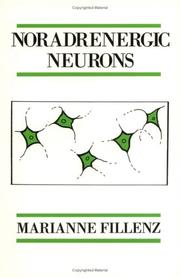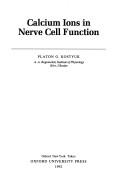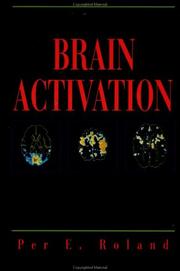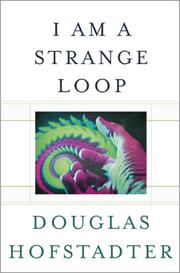| Listing 1 - 10 of 18 | << page >> |
Sort by
|
Book
ISBN: 0272794163 Year: 1977 Publisher: Tunbridge Pitman Medical
Abstract | Keywords | Export | Availability | Bookmark
 Loading...
Loading...Choose an application
- Reference Manager
- EndNote
- RefWorks (Direct export to RefWorks)

ISBN: 0878933239 Year: 1992 Publisher: Sunderland Sinauer
Abstract | Keywords | Export | Availability | Bookmark
 Loading...
Loading...Choose an application
- Reference Manager
- EndNote
- RefWorks (Direct export to RefWorks)
General biophysics --- Animal physiology. Animal biophysics --- Human physiology --- Neurons --- Ion Channels --- Ion channels --- Excitable membranes --- Cytologie --- Ion-kanalen --- Neuronen --- Cytologie. --- Ion-kanalen. --- Neuronen. --- Celbiologie.

ISBN: 0521287804 Year: 1990 Publisher: Cambridge New York Sydney Cambridge University Press
Abstract | Keywords | Export | Availability | Bookmark
 Loading...
Loading...Choose an application
- Reference Manager
- EndNote
- RefWorks (Direct export to RefWorks)
Neurones noradrénergiques --- Noradrenergic neurons --- Noradrenergische neuronen --- #psyc:gift 1996 --- Neurons --- Noradrenergic mechanisms --- Physiology --- Noradrenalin --- Noradrenergic neurons. --- Neurons - physiology. --- Norepinephrine - physiology.
Book
ISBN: 353440095X 3534400941 Year: 2021 Publisher: Wissenschaftliche Buchgesellschaft (wbg)
Abstract | Keywords | Export | Availability | Bookmark
 Loading...
Loading...Choose an application
- Reference Manager
- EndNote
- RefWorks (Direct export to RefWorks)
Long description: Hermann von Helmholtz war einer der einflussreichsten Wissenschaftler seiner Zeit und trug wesentlich zum Verständnis optischer, akustischer, thermodynamischer und elektrischer Phänomene bei. Seine Laufbahn aber begann er mit einer in Latein verfassten Doktorarbeit über den Aufbau der Nervensysteme von Wirbellosen. Dieser bisher wenig beachtete Wissenschaftstext soll durch diesen Band einem breiten Publikum zugänglich gemacht werden. Als Doktorand von Johannes Müller, dem Begründer einer wissenschaftlichen Zoologie, untersuchte Helmholtz an der Friedrich-Wilhelm-Universität Berlin die Nervensysteme von Insekten, Spinnen, Krebsen, Schnecken und Würmern und verglich ihre äußeren Strukturen sowie die innere Feinstruktur. Dank der sehr guten Mikroskope beschrieb er Nervenzellen mit ihren Fasern und erkannte den allgemeinen Aufbau von Ganglien des Bauchmarks. Das führte ihn zu der Überlegung, dass die zentralen Nervensysteme von Wirbellosen und Wirbeltieren viele Gemeinsamkeiten besitzen. Long description: Hermann von Helmholtz (1821-1894) trug wesentlich zum Verständnis physikalischer Phänomene bei. Seine wissenschaftliche Laufbahn begann er mit einer vergleichenden Doktorarbeit über den grundlegenden Aufbau der Nervensysteme von Wirbellosen. Dieser lateinische Wissenschaftstext wird nun in deutscher und englischer Übersetzung zugänglich gemacht. Biographical note: Julia Heideklang ist Wissenschaftliche Mitarbeiterin und Doktorandin im Graduiertenkolleg GRK2190 Literatur- und Wissensgeschichte kleiner Formen an der Humboldt-Universitätt zu Berlin und forscht zu den Paratexten frühneuzeitlicher botanischer Wissenschaftstexte. Hans-Joachim Pflüger ist Professor für Funktionelle Neuroanatomie/Neurobiologie an der Freien Universität Berlin (im Ruhestand) und interessiert an der Evolution von Nervensystemen der Wirbellosen. Helmut Kettenmann ist Senior-Professor an der Charité-Universitätsmedizin Berlin und Chair Professor am Shenzhen Institute of Advanced Technology, Shenzhen, Shenzhen, China. Er untersucht die Rolle von Gliazellen im normalen und pathologischen Gehirn.
Wissenschaftsgeschichte --- Medizin --- Doktorarbeit --- Neurowissenschaft --- Nervensystem --- Hermann von Helmholtz --- Neulatein --- Humboldt Universität --- Charité --- Nervenzelle --- wbg Publishing Services --- Berliner Universität --- Ganglien --- Invertebraten --- neulateinische Dissertation --- Neuronen --- Wirbellose
Periodical
Abstract | Keywords | Export | Availability | Bookmark
 Loading...
Loading...Choose an application
- Reference Manager
- EndNote
- RefWorks (Direct export to RefWorks)
Periodical
Abstract | Keywords | Export | Availability | Bookmark
 Loading...
Loading...Choose an application
- Reference Manager
- EndNote
- RefWorks (Direct export to RefWorks)

ISBN: 0198546726 Year: 1992 Volume: vol 1 Publisher: Oxford Oxford University Press
Abstract | Keywords | Export | Availability | Bookmark
 Loading...
Loading...Choose an application
- Reference Manager
- EndNote
- RefWorks (Direct export to RefWorks)
Physiology of nerves and sense organs --- Calcium channels --- Calciumkanalen --- Circuits du calcium --- Nerve-cells --- Neurocyte --- Neuronen --- Neurones --- Neurons --- Calcium channels. --- Calcium --- Neurons. --- Calcium Channels --- Physiological effect. --- physiology. --- pharmacology. --- Physiological effect --- Calcium - Physiological effect.

ISBN: 0471508675 Year: 1993 Publisher: New York : Wiley-Liss,
Abstract | Keywords | Export | Availability | Bookmark
 Loading...
Loading...Choose an application
- Reference Manager
- EndNote
- RefWorks (Direct export to RefWorks)
Beelding [Hersen] --- Brain chemistry --- Brain mapping --- Cellen [Glia] --- Cellules névrogliques --- Cerveau -- Chimie --- Gliacellen --- Glial cells --- Hersen"chemie --- Hersenbeelding --- Nerve-cells --- Neurocyte --- Neuroglia --- Neuronen --- Neurones --- Neurons --- Névroglie --- Représentation cervicale --- Représentation du cerveau --- Brain --- Metabolism

ISBN: 9780465030781 0465030785 9780465030798 Year: 2007 Publisher: New York : BasicBooks,
Abstract | Keywords | Export | Availability | Bookmark
 Loading...
Loading...Choose an application
- Reference Manager
- EndNote
- RefWorks (Direct export to RefWorks)
What do we mean when we say "I"? Can thought arise out of matter? Can a self, a soul, a consciousness, an "I" arise out of mere matter? If it cannot, then how can you or I be here? I Am a Strange Loop argues that the key to understanding selves and consciousness is the "strange loop"--a special kind of abstract feedback loop inhabiting our brains. Deep down, a human brain is a chaotic seething soup of particles, on a higher level it is a jungle of neurons, and on a yet higher level it is a network of abstractions that we call "symbols." The most central and complex symbol in your brain or mine is the one we both call "I." The "I" is the nexus in our brain where the levels feed back into each other and flip causality upside down, with symbols seeming to have free will and to have gained the paradoxical ability to push particles around, rather than the reverse. For each human being, this "I" seems to be the realest thing in the world. But how can such a mysterious abstraction be real--or is our "I" merely a convenient fiction? Does an "I" exert genuine power over the particles in our brain, or is it helplessly pushed around by the all-powerful laws of physics? These are the mysteries tackled in I Am a Strange Loop, Douglas R. Hofstadter's first book-length journey into philosophy since Godel, Escher, Bach. Compulsively readable and endlessly thought-provoking, this is the book Hofstadter's many readers have long been waiting for.
Self (Philosophy) --- Consciousness. --- Intellect. --- Soul. --- Moi (Philosophie) --- Conscience --- Intelligence --- Ame --- Consciousness --- Intellect --- Soul --- brein --- biologie --- neuronen --- wetenschap --- subjectiviteit --- filosofie --- neurologie --- kunst --- wiskunde --- psychologie --- bewustzijn --- 159.955 --- Conscience de soi --- Moi (philosophie)
Periodical
ISSN: 10495258 Publisher: San Mateo, Calif.
Abstract | Keywords | Export | Availability | Bookmark
 Loading...
Loading...Choose an application
- Reference Manager
- EndNote
- RefWorks (Direct export to RefWorks)
Neural computers --- Neural networks (Computer science) --- Neural computers. --- Neuronen. --- Informatieverwerking (computer) --- Neurale netwerken. --- Electronic Data Processing. --- Models, Neurological. --- Neural Networks, Computer. --- Neurobiology. --- #TELE:d.d. Prof. A. J. J. Oosterlinck --- Neurobiology, Cellular --- Neurobiology, Molecular --- Cellular Neurobiology --- Molecular Neurobiology --- Model, Neurological --- Neurologic Model --- Neurological Model --- Neurological Models --- Neurologic Models --- Model, Neurologic --- Models, Neurologic --- Computer architecture. Operating systems --- Artificial intelligence. Robotics. Simulation. Graphics --- Models, Neurological --- Neurobiology
| Listing 1 - 10 of 18 | << page >> |
Sort by
|

 Search
Search Feedback
Feedback About UniCat
About UniCat  Help
Help News
News